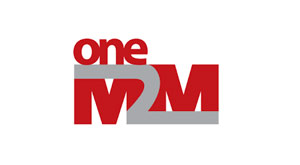oneM2M

The purpose and goal of oneM2M is to develop technical specifications which address the need for a common M2M service layer that can be readily embedded within various hardware and software, and relied upon to connect myriad devices in the field with M2M application servers worldwide.
About oneM2M
A critical objective of oneM2M is to attract and actively involve organisations from M2M-related business domains such as: telematics and intelligent transportation, healthcare, utilities, industrial automation, smart homes and others. There are currently 228 participating partners and members in the organisation.
IoT credentials
oneM2M traces its roots to initial standardisation work begun by ETSI in 2008, along with similar initiatives in other industries and geographies. This encompassed efforts to try to understand what was available in the market and what was missing in terms of facilitators to expand the market and break down the walls between the approaches being taken by different industrial sectors.
In 2009 the ETSI group, which later became Smart M2M, began work as a Technical Committee within ETSI. It became obvious that there were a lot of components involved but, at the same time, the group looked at the factors that were blocking the market’s further development.
Similar efforts were also initiated in Asia and North America and it became apparent that there was a need to foster global co-ordination of these efforts so oneM2M was established to enable this and meet the needs of the vendor community to have common solutions to address multiple markets.
IoT application areas covered:
It isn’t oneM2M’s objective to standardise the whole IoT environment across networks, applications and devices. The objective is to standardise interfaces so they’re applicable to the entire ecosystem. The intent is not to limit or excessively specify the activities of individual industries or businesses but to provide a means for them to interoperate openly, but securely, with each other.
IoT technology areas covered:
oneM2M’s goal is to prepare, approve and maintain the necessary set of technical specifications and technical reports for:
- Use cases and requirements for a common set of service layer capabilities;
- Service layer aspects with high level and detailed service architecture, in light of an access independent view of end-to-end services;
- Protocols/APIs/standard objects based on this architecture (open interfaces & protocols);
- Security and privacy aspects (authentication, encryption, integrity verification);
- Reachability and discovery of applications;
- Interoperability, including test and conformance specifications;
- Collection of data for charging records (to be used for billing and statistical purposes);
- Identification and naming of devices and applications;
- Information models and data management (including store and subscribe/notify functionality);
- Management aspects (including remote management of entities); and
- Common use cases, terminal/module aspects, including Service Layer interfaces/APIs between:
- Application and Service Layers;
- Service Layer and communication functions
Links to further information and ongoing standardisation projects:
http://www.onem2m.org/technical/latest-drafts
